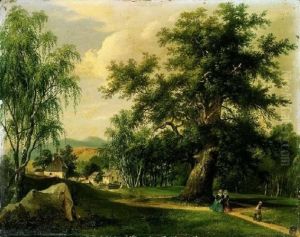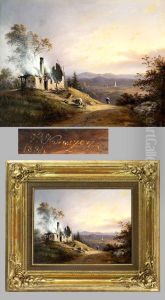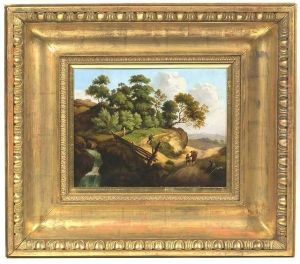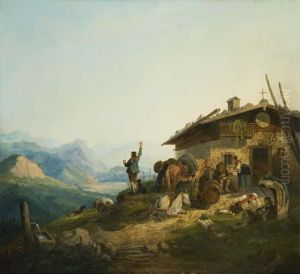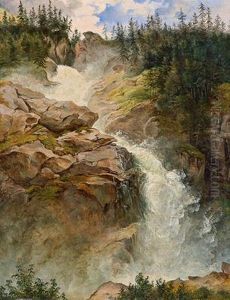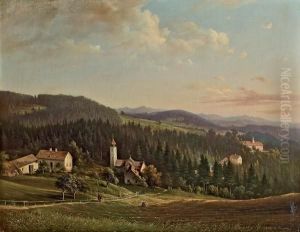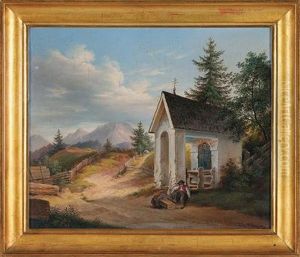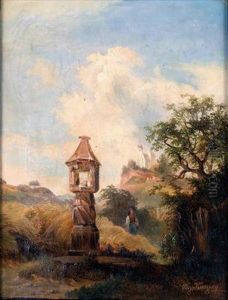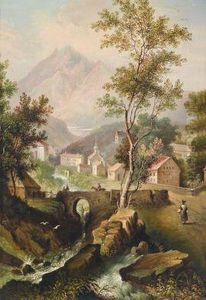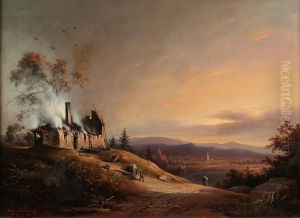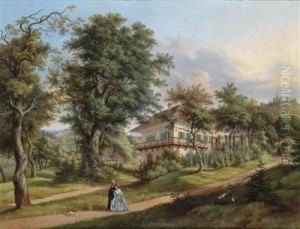Vincenz Kreuzer Paintings
Vincenz Kreuzer was an Austrian artist known for his landscape and architectural paintings. Born on February 20, 1809, in Vienna, Austria, he was part of the Biedermeier period, a term that describes the artistic styles that flourished in the German-speaking countries of Europe during the period of 1815 to 1848. This era is characterized by a sense of order and a retreat into the private sphere in the aftermath of the Napoleonic Wars.
Kreuzer's work is often noted for its detailed depiction of nature and buildings, with a strong sense of realism and attention to light and shadow. He was particularly skilled in capturing the interplay between architecture and the natural landscape. Kreuzer’s paintings often reflected the tranquility and simplicity of rural life, which was a common theme in Biedermeier art.
During his lifetime, Kreuzer's talents were recognized and he received several commissions. Despite this, he is not widely known today outside of specialist circles, and little has been written about him in contemporary art historical literature. However, his paintings can be found in various European art collections, and they continue to be studied by those interested in the Biedermeier era and the development of landscape painting in the 19th century.
Vincenz Kreuzer's contributions to the art world remained consistent throughout his career, and he was considered a proficient landscape artist of his time. He passed away on December 30, 1888, in Vienna, leaving behind a legacy of work that captures the essence of Austrian landscapes and urban scenes during a distinct historical period.
